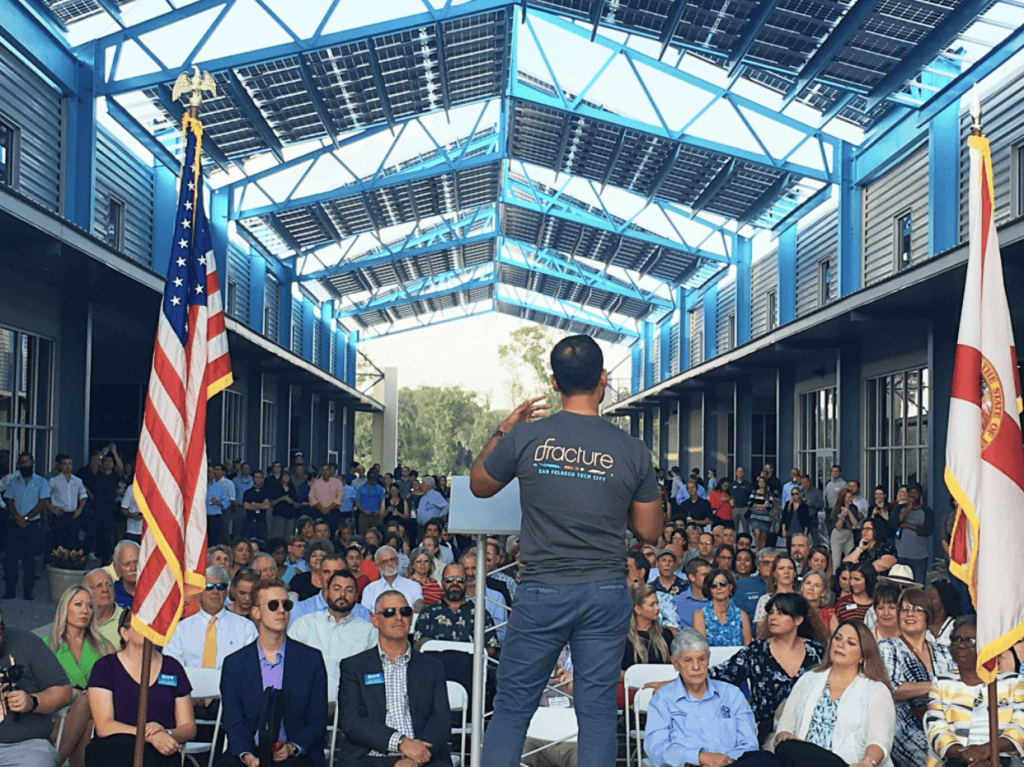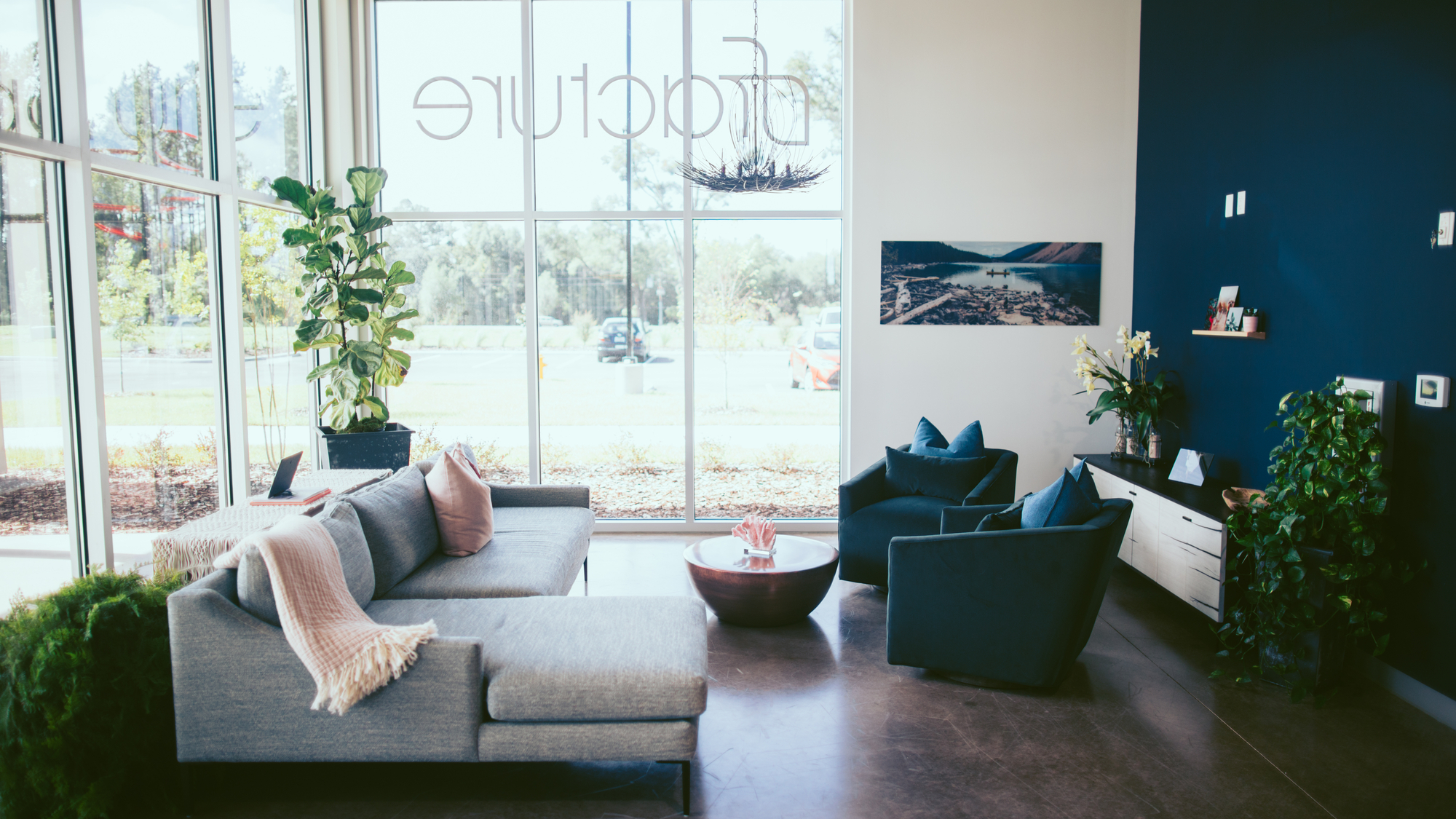Understanding climate change can feel like looking up at a gigantic, stormy sky. There’s still so much we don’t know about what lies ahead for our planet. While it takes a whole world working together to make the big changes, **businesses and folks can do their part** to cut down on carbon footprints. So, **what’s a carbon footprint** anyway?
According to The New York Times, a carbon footprint is “the total amount of greenhouse gas emissions that come from the production, use, and end-of-life of a product or service.” Gas emissions include carbon dioxide, methane, and nitrous oxide; all of these trap heat in the atmosphere, thereby leading to global warming. In general, the most common contributions to an individual’s carbon footprint come from food, housing, and transportation.
Thankfully, it’s not all doom and gloom; there’s a lot each of us can do in our day-to-day lives to help reduce our collective carbon footprint. We’ll share how Fracture is working to reduce its carbon footprint and different ways that you can do the same.

How Fracture is reducing its carbon footprint
Offsetting carbon
With the help of nonprofit We Are Neutral, Fracture became completely carbon neutral in 2015. In 2020 alone, Fracture managed to offset 573.07 tons of carbon. That’s the same environmental impact as removing 124 vehicles from the road, switching 21,771 incandescent light bulbs to LEDs, or planting 9,476 trees and letting them grow for 10 years.
Sustainable in all ways, always
Fracture is always on the lookout for innovative ways to protect our planet from the impact of waste and disposable plastics. We’ve committed to that by producing a sustainable, low-waste product (glass) and shipping it in durable, recyclable packaging. Moreover, in order to save paper and stay green, we don’t include paper invoices or receipts in our boxes; instead, we send them electronically to customers through email. From glass to production to packaging, we’re committed to a small footprint.
We built Tech City
In summer 2019, Fracture moved from downtown Gainesville to a new 30,000 square foot facility, right on the outskirts of Gainesville, in Alachua, Florida. From the beginning, we focused on the value of treading lightly on the planet with our facility, from the most basic things like our energy source (we’re completely solar-powered). Factors like the construction of the facility, the installation, and also minimizing the amount of A/C we use were thoughtfully integrated into our day-to-day operations. It was a huge project—one of the most complicated things we’ve ever done—but it was completely worth it.
How you can do it, too
Change your diet
Many experts agree that cutting down on meat, particularly red meat, is a more eco-friendly option. This is due to the environmentally harmful nature of red meat production, which uses a large amount of feed, water, and land. In fact, the University of Michigan’s Center for Sustainable Systems reports that beef gives off over six pounds of carbon dioxide per serving. In contrast, the amount created per serving of rice, carrots, apples, or potatoes is less than half a pound.
With some dietary modifications, you can combat food-related carbon emissions. For meat-lovers, you can swap beef and lamb with the more environmentally-friendly chicken. If you have the desire—and willpower—you can switch to a vegan, vegetarian, or pescatarian diet. However, you don’t have to go all in on a certain diet if you don’t feel like it’s for you; even eating more plant-based foods will make all the difference. Overall, it’s a good idea to eat as low down the food chain as often as you can; not only will this help reduce your carbon footprint, but it’s a cost-effective and healthy diet lauded by experts.

Produce less waste
The EPA estimates the average American produces 4.4 pounds of trash per day (that’s 1,606 pounds per year). Because of this, many people have started chasing the “zero waste” (or low waste) lifestyle, which has a huge impact on reducing our collective carbon footprint. In her book “Zero Waste Home,” Bea Johnson outlines the “5 R’s of Zero Waste Living,” which are:
- Refuse what you don’t need
- Reduce what you do need, and reconsider how much stuff you actually need
- Reuse by repurposing stuff or by using reusable items
- Recycle what you can’t refuse, reduce, or reuse
- Rot (compost) the rest
While these are general guidelines, there are numerous other ways for living zero waste. In practice, these can look like:
- Say no to straws at restaurants; bring your own metal one instead
- Challenge yourself to buy less new clothes or stick to thrifting
- Carry reusable water bottles as well as coffee cups
- Bring reusable shopping bags to grocery stores
- Before throwing things away, check if they’re recyclable

Support sustainable and ethically-sourced brands
Finding eco-friendly brands may have been a challenge 20 years ago. Nowadays, we’re living in a golden age full of ethical and sustainable brands, so there’s plenty to choose from. The question is, how do you identify them?
First, look for clear data on programs and initiatives a brand is involved in. For example, if a brand is vocal about putting their retail proceeds toward a certain charity or cause (and, better yet, if they showcase the final results), they’re likely a good candidate. Next, do some research on brands you’re interested in. To help guide you, use the Good On You app to discover ethical brands and see how your favorites measure up. You can also perform a search yourself, as most brands have an “Our Story” or “Our Mission” section on their website. Simply learn about their values and any green initiatives they support. Moreover, a truly carbon footprint-conscious brand will be upfront about how their products are made and what they’re made of.
To illustrate, Fracture has a few environmental call-outs on our website; in the “Our Company” page, we share our commitment to the responsible stewardship of our planet. We also showcase a video on what it means to be carbon neutral.
We also publish web content regularly that details how we produce and package our glass prints sustainably. Customers can feel good about our glass prints because they are made by real people in our solar-powered, carbon neutral facility.
It’s important for us to be transparent about our green efforts, as it is to any sustainable brand. The bottom line is when a brand is truly passionate about treading lightly on our planet, they’ll be proud to share it. At the end of it all, use your best judgment when it comes to supporting ethical brands, and know that how and where you spend your money really doesn’t make a difference.
With these simple tips, you’re on your way to living more sustainably. In the quest to reduce our collective carbon footprint and save our planet, Fracture is honored to bring you along with us.





Comments